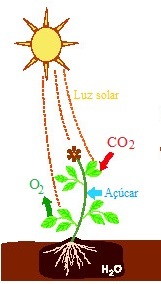O sanitation constitutes a set of measures that positively impact the quality of life of the human population and includes services such as access to potable water it's the sewage treatment. Although it is common to associate basic sanitation to just these services, it also includes urban cleaning, solid waste management, as well as urban rainwater drainage and management.
We all have the right to basic sanitationHowever, according to the United Nations (UN), more than 4.2 billion people live without access to it. Access to safe drinking water and sanitation for all by 2030 is Sustainable Development Goal (SDG) number 6. The SDGs are a global agenda made up of 17 goals, which must be achieved by 2030.
Read too: How is water treatment done?
What is basic sanitation?
According to Law No. 11,445, basic sanitation is:
“the set of public services, infrastructures and operational facilities for: drinking water supply; sanitary sewage; urban cleaning and solid waste management; drainage and urban stormwater management.”
When we talk about drinking water supply, we are referring to the treatment and distribution of Water quality for the population and that can be consumed without endangering human health. THE sewage collection and treatment, in turn, ensure that the sewage is captured and the contaminants present in it are removed, allowing it to be returned to the environment without causing damage. According to the UN, more than half of the population does not have access to treated sewage.

THE urban cleaning and solid waste management They relate to collect and treatment of trash urban. Incorrect disposal of garbage causes environmental pollution and is related to the emergence of diseases, since various vectors proliferate in the garbage. Garbage released into the environment, for example, can accumulate water and become a breeding ground for the dengue mosquito, which is a vector of various diseases. Garbage also favors the proliferation of rats, which are related to leptospirosis.
Finally, we have the drainage and urban stormwater management, a basic sanitation service related to the water of the rains. Without proper drainage and management of urban rainwater, we are subject to greater risks of flooding, flooding and flooding.
Read too: Conditions for quality of life in cities
Why is basic sanitation important?
Basic sanitation is fundamental towill improvequality of life of a population. When people do not have access to clean water and efficient sewage treatment services, for example, they are more prone to diseases such as diarrhea, leptospirosis, among others. According to the UN, every day more than 800 children die from diseases such as diarrhea and other infections caused by poor sanitation and contaminated water.

Sick people have a negative impact on the health systems of a region, as there are costs for treating these people. We can therefore conclude that when we invest in sanitation, we have reduction in expenses with health treatments.
The lack of basic sanitation it also has an impact on the economic development of a region. Areas without sanitation have less investment, which results in a reduction in job creation. Tourism, for example, is not developed in these areas, as regions with sewage, water supply and cleaning problems are not very attractive for visitors.
We must also not forget that where there is basic sanitation there is a greater preservation of the environment. By treating sewage, for example, we ensure that this material does not reach aquatic environments and, in this way, we preserve these ecosystems.
Read too: garbage decomposition time
Sustainable Development Goal 6 (SDG 6)
The Sustainable Development Goals (SDGs) were set in 2015 by the UN and are a series of goals aimed at to guarantee the protection of the environment, education and health for all, an end to poverty and hunger, peace among peoples, among others. The SDGs are a action schedule until 2030 and are made up of 17 goals and 169 goals.
SDG 6 concerns drinking water and sanitation, and the goal to be achieved is “ensure the availability and sustainable management of water and sanitation for all”. The goals of this objective, until 2030, are: Achieve universal and equitable access to safe drinking water for all and improve water quality by reducing pollution, eliminating dumping and minimizing the release of chemicals and hazardous materials, halving the proportion of untreated wastewater and substantially increasing recycling and safe reuse globally.


